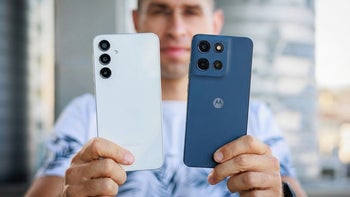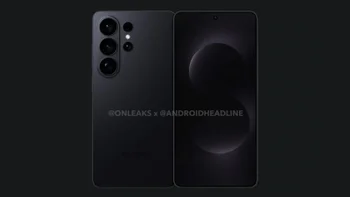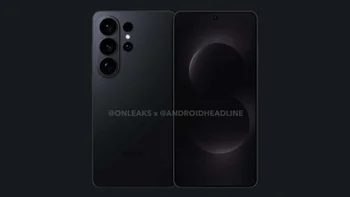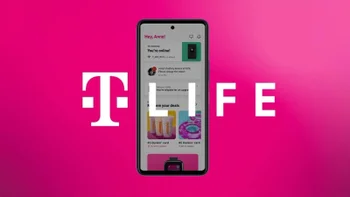iPhone chip in a MacBook? Apple’s strangest move yet makes perfect sense
Desktop chip in a tablet and a phone chip in a laptop? Has Apple lost the plot?
This article may contain personal views and opinion from the author.

Rumors are piling up that Apple is reportedly putting an iPhone chipset inside an upcoming affordable MacBook. Meanwhile, the latest iPad comes with the desktop-grade M5 chipset. Why this almost comical mix-up? Is Apple pulling chipset names from a magician's bag when deciding what silicon to put in its upcoming device?
For a layman, this could seem to be the case, but once you dig deeper, you quickly realize that this old-time notion of "desktop-grade" and "mobile-only" chips is no longer applicable in the modern chip industry, and Apple is leaning heavily on that.
This mysterious but intriguing low-cost MacBook will reportedly come with a lower-end LCD screen that will be slightly below 13.6 inches in size, with a price tag well below a thousand dollars. All of that with the software excellence of macOS, which even at a lower price tag would be much more capable than even an iPad Pro with a Magic Keyboard with the pretty limited iPadOS on deck.
Apple's chips all share the same core DNA
For starters, despite the different naming schemes, Apple's A-series chips that usually end up in iPhones and lower-tier iPads and the M-series chips destined for Macs and iPad Pro models share an enormous amount of similarities. Both are part of the overarching Apple Silicon family, both are based on the ARM architecture, and most M-chips are based on an existing A-series chip design.
In fact, the very first modern Apple Silicon chip, the M1, was pretty much a rebadged Apple A14X chip with two extra performance cores, slightly higher clock speeds for the efficiency and performance cores, and some laptop-specific goodies added for good measure.
The same trend can be generally observed with the latest, hot-off-the-presses Apple M5 chip, which is just a bigger and meaner Apple A19 Pro, the same chip you'd find in the latest iPhone 17. As a result, devices equipped with the M5 and the A19 Pro chips scored nearly identical CPU and GPU performance gains over their preceding generations.
Judging from those trends, it wouldn't take a genius to deduce that the upcoming Apple M6 chip will follow closely behind the Apple A20 Pro chipset that will inevitably power next year's iPhone crop.
Yes, of course M-series chips are more powerful and have vastly different power curves than the A-series chips designed for superb efficiency, and of course you can drive way more external displays with an M-series chip, but boiled down to the bare essence, Apple's two chipset lines are fraternal twins at best and first cousins at worst.
So, with that in mind, this segregation between mobile-first and desktop-first chips quickly falls apart. In fact, it fell apart as soon as Apple threw in the M1 chip inside the 5th Gen iPad Pro back in 2021.
An entry-level MacBook with an A-series chip just makes sense
Although it's funny to poke fun at Apple for mix-and-matching chips and devices, the more you look into the latest rumors about a low-cost MacBook powered by an iPhone chip, the more it sounds like the inevitable and logical conclusion to the battery life problem.
While M chips are pretty much perfect for any MacBook, it's also true that most of their features are an overkill for the standard user, and much of the excess performance reserves are usually wasted on Google Sheets and YouTube videos.
A MacBook Air with an A-series chip would be a perfect match for students and very light users, whose needs can all be met by a web browser.
Such a device would likely deliver astonishing battery life due to its inherent efficiency and significantly tighter thermal management. That would play nicely with the passive cooling of the MacBook Air and the larger battery in the enclosure, which would ironically improve the performance and efficiency even more.
As downsides, this laptop will likely be unable to drive more than one external monitor, and there's the possibility that only basic screen mirroring could be added.
The chip shuffle shouldn't affect you
So, let's get this straight… Pro iPads get the M-series chips, and entry-level MacBooks could be equipped with A-series chips, whereas the vice versa scenario should typically be the case?
Yes, and that's fine, as each of these device families serves a different purpose. Pro iPads should be considered by professional users who are much more likely to make use of the extra performance and capabilities of said devices, whereas regular users that just need a good laptop with excellent battery life would likely be unbothered by the iPhone chip ticking beneath the keyboard.
Regardless if it's an A18 Pro or an A19 Pro chip inside this low-cost MacBook, it will likely sell like hotcakes, and I, for one, wouldn't be remotely disturbed by the lack of "proper" Apple Silicon inside.
Follow us on Google News




![Some T-Mobile users might be paying more starting in March [UPDATED]](https://m-cdn.phonearena.com/images/article/176781-wide-two_350/Some-T-Mobile-users-might-be-paying-more-starting-in-March-UPDATED.webp)









Things that are NOT allowed:
To help keep our community safe and free from spam, we apply temporary limits to newly created accounts: